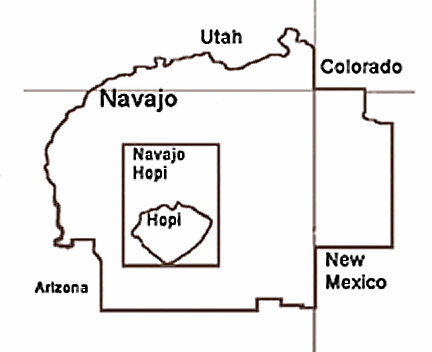 CENTENNIAL MUSEUM - CHIHUAHUAN DESERT GARDENS—THE UNIVERSITY OF TEXAS AT EL PASO
CENTENNIAL MUSEUM - CHIHUAHUAN DESERT GARDENS—THE UNIVERSITY OF TEXAS AT EL PASOTHE NAVAJO NATION (Diné)
WHO
Traditionally known as the Diné, the Navajo Nation is a sovereign Native American Tribe with land holdings in Northeastern Arizona, Utah, and New Mexico. According to the 2000 census, 173,987 tribal members out of 298,215 live on 27,000 square miles of tribal lands. A person must have a blood quantum of at least one-fourth to receive a Certificate of Indian Blood (CIB) and be enrolled as a tribal member. Diné means "the people" in the Navajo language. Both the Apache and Navajo languages are in the Southern Athabaskan language family (one group of peoples who have migrated across the Bering Strait). Until the 1500s, these peoples were probably a single group. Tewa Pueblo inhabitants may have given the newcomers the name Navajo, meaning "takers from the fields."
WHERE
Tribal lands abut the Ute Nation at the Four Corners Monument and stretch into Arizona, Utah, and New Mexico across the Colorado Plateau. Within this area is the Hopi Reservation, as their historic homeland predates Diné occupation. In the 1980s, a 75-year lease was given to the Diné to allow joint use of shared land and avoid conflict. Monument Valley, Shiprock landmark, Rainbow Bridge, and Canyon de Chelly National Monument are all within the Navajo region.
HISTORY
By the middle of the 16th Century, the wandering Athabaskans were exchanging bison meat, hides, and stone tool materials with the Pueblos for their maize and woven cotton goods. The Spanish explorer Coronado made observations of Plains people wintering in established camps near the Pueblos in the 1620s and by the 1640s
the Athabaskan peoples from Chama were included in the term "Apachu de Nabajo". In the early 1860s, more than 10,000 Mescalero Apaches and Navajos were forced by the U.S. Army to take the "Long Walk" from Dinetah to Bosque Redondo Reservation at Fort Sumner in New Mexico. After 4 years and an estimated 2,389 deaths, the Army considered the experiment a failure and returned the survivors to Dintah in 1868.
ECONOMY
The region is rich in natural and cultural resources. Gas, oil, uranium, and coal are important mineral resources. Agriculture, tourism, and highly developed art forms, such as weaving and silversmithing also add to the economy.
LIFESTYLE
The doorway of a Navajo hogan opens to the east to welcome the morning sun. Traditionally these round, or up to seven-sided homes, are constructed of wooden poles, tree bark, and mud. The belief system of harmony in all aspects of life is imperative in daily living. The creation story of passing through four underworlds to get to the present world binds modern life to traditions.

